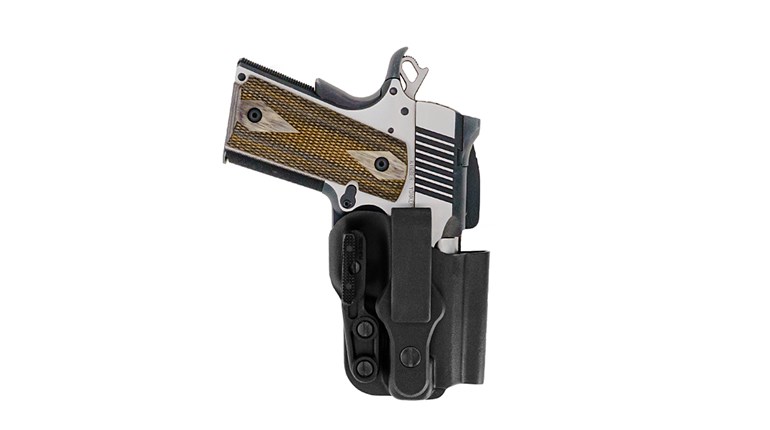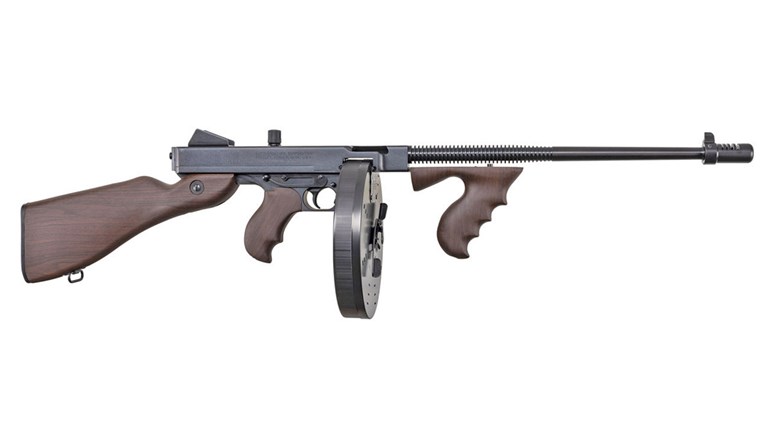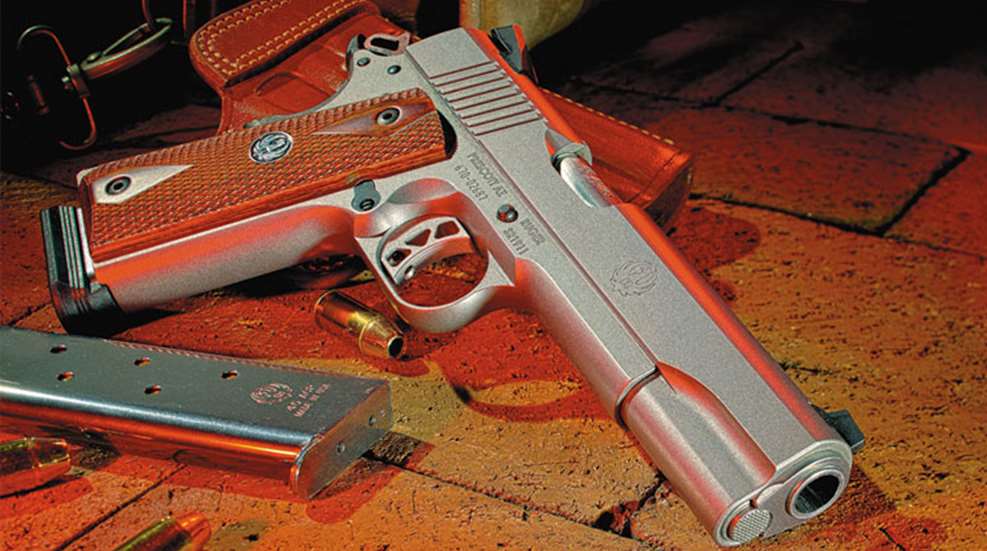
About a year ago I was a guest at Ruger's Arizona plant, outside of Prescott. Our tour led us all around this great facility until we ended up at the indoor range where all of the guns are tested prior to shipping. On the wall, outside the range, was a large board that listed all of the handguns built in the plant and the numbers that had been tested and were ready for shipping. Glancing down the list, I noticed that the last category was marked "1911."
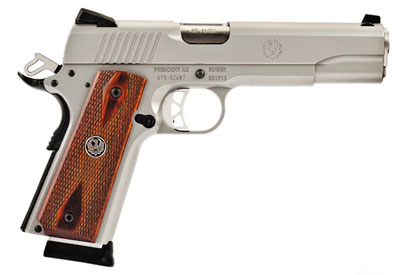
Wait a minute, Ruger doesn't make a 1911! In police work, that is what we would call a clue. Of course, the Ruger folks had nothing to say about any 1911, or any plans to build one.
Now, I can't get upset at the Ruger folks. It's a publicly traded company and as such is extremely serious about not violating any of the laws regarding securities information. Ruger is also a healthy, active firearms company that is continually giving thought to new gun designs that may, or may not, ever see the light of day. Still, being a trained investigator, I saw all the signs it was probably going to produce a 1911 pistol in the very near future. So I wasn't entirely surprised when I was invited to a Ruger event at Gunsite in December 2010 to be one of the first to test some sort of new pistol.
While I never doubted Ruger would build a good handgun, I did question whether another 1911 would do well in today's market. I've lost count, but I think that there are some 40 companies, foreign and domestic, currently producing some sort of 1911 handgun. And, even in this year of the 100th birthday of the grand-old fighting pistol, I wasn't sure there was room for one more.
Even though there is a large number of 1911 pistols being produced, in my view many of them miss the mark when it comes to their use as a personal-defense gun for police, military, or the armed citizen. I don't know a lot about what is needed in a competition pistol, but I do have more than a passing association with the requirements for a fighting handgun.
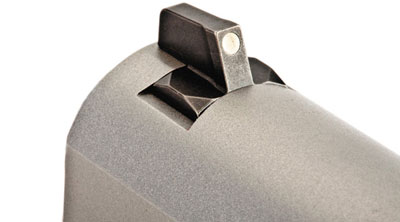
The defensive handgun needs good sights and a decent trigger. The manufacturing budget doesn't need to be spent on added gizmos like light rails, one-piece guide rods, flared magazine wells and the like. Instead it should be spent on building a handgun that is reliable and accurate. This is done by making sure the slide and frame are properly mated, the extractor adjusted for dependability, and the barrel and barrel bushing are properly fitted to the slide. It is this attention to internal issues that make the 1911 reliable and capable of hitting where you are aiming.
At the Gunsite event, we were able to examine and shoot the pre-production models of the Ruger SR1911. Ruger has several employees who are competitive shooters and know their way around a 1911. But I was also pleased to learn Ruger had engaged the counsel of Wayne Novak and President of Novak Sights Charley Pulit (himself a respected pistolsmith). It appeared to me that Ruger was on the right track with its new pistol.
The Ruger SR1911 is a government model handgun, in .45 ACP, with a 5-inch barrel. It is manufactured entirely out of stainless steel and weighs 39 ounces. There are no plastic parts anywhere on the handgun, and the only aluminum part is the skeletonized trigger.
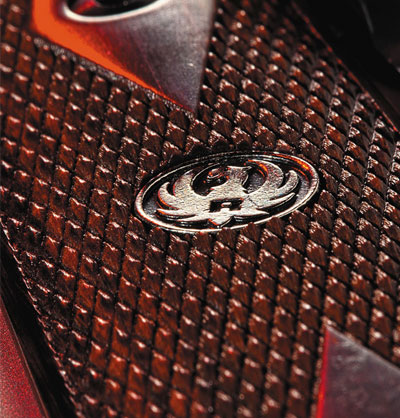
The pistol's slide and barrel are forged from stainless steel. The extractor is of the traditional internal variety, while the firing pin is titanium. Immediately obvious is the fact that there are no forward cocking serrations on the slide. These, of course, are not needed when one learns to do a proper chamber check. The slide also sports the Novak's LoMount fixed, 3-dot combat sights attached to the slide using standard Colt-style dovetails. The slide does not have a firing-pin block safety.
Lately, folks have begun to refer to 1911s as being Series 80 or Series 70 pistol, depending upon whether or not they have a firing-pin block safety. Series 80 and Series 70 actually refer to specific models of Colt pistols and to use these terms merely confuses the matter.
Supposedly, the firing-pin block safety is designed to keep the 1911 from firing if it is dropped directly on its muzzle from any height. In the real world, this rarely, if ever, happens. What actually occurs is that the firing-pin block safety can malfunction and cause a failure to fire. It is a design that was tried years ago and discarded, only to be brought back by today's lawyers. What actually solves the problem is a titanium firing pin, a proper firing-pin spring and adherence to basic handgun safety rules. Ruger gets a gold star from me for leaving it out of its new 1911.
The company gets another gold star for using the traditional recoil-guide system instead of that silly one-piece guide rod business. Extensive tests have shown that the long, one-piece guide rod does not improve the accuracy or the reliability of a 1911 pistol. All it really does is make the 1911 more difficult to field-strip for cleaning and maintenance. It is just another one of those unnecessary frills I was talking about earlier.
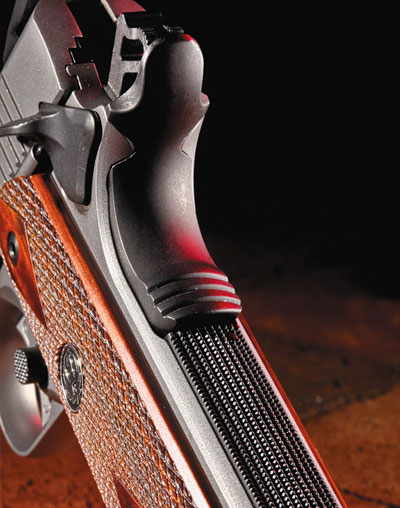
The locking lugs on Ruger's stainless steel barrel have been fitted quite snugly to the corresponding lug slots in the slide. It is apparent due attention was given to the way the barrel bushing mates with the barrel and the slide. Yet, I also found that the barrel bushing could be removed by hand, without the use of a bushing wrench.
The frame of the SR1911 is cast stainless steel. Ruger has owned a casting company for a number of years and, while it is not generally known, it has been casting 1911 frames for other companies for quite some time. I was pleased to see the plunger tube, which interacts with the slide stop and thumb safety, was an integral part of the slide. Traditionally, this has been a separate part staked onto the frame. On other guns, this staked tube can come loose or completely fall off—that won't happen on this new Ruger.
The frontstrap of the Ruger frame is smooth, with no checkering. In fact the only checkering on the pistol is found on the mainspring housing and the slightly enlarged magazine-release button. The checkering on the mainspring housing and the wood stocks will give most shooters the secure grip they need when firing the pistol.
The SR1911's thumb safety is what I call a conservative combat style. It is big enough to give the shooting thumb good purchase, but not so big as to get in the way. The grip safety is of the beavertail design and has an enlarged portion at the base, some call it a "speed bump," to allow positive disengagement. During the December shooting of the pre-production models, some of us had trouble disengaging the grip safety. However, one of the Ruger engineers, who was also having trouble with the grip safety, indicated he knew how to fix that particular problem. He suspected that the forward portion of the grip safety, where it interacted with the 3-leaf sear spring, needed adjustment. That must have done the trick because the production model I have been testing has not experienced any trouble at all.
The Ruger 1911's hammer is described as skeletonized, and most would recognize it as a variation of the Commander-style hammer. The aluminum trigger is also skeletonized and has an adjustment for over-travel. Ruger sets the triggers to break somewhere between 4 and 5.5 pounds. My test gun had a 4.5-pound trigger that broke cleanly, with no creep to it.
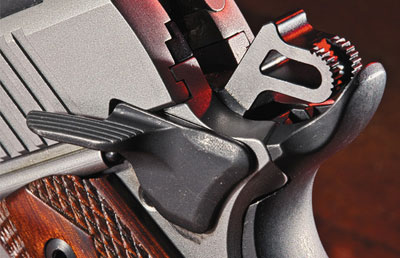
The Ruger SR1911s we examined had checkered rubber stocks. In the actual production run, Ruger has changed this to attractive wood stocks with a diamond checkering pattern and the Ruger medallion on each side. These checkered-wood stocks give the pistol a classy look.
But, I am not nearly as concerned about classy-looking pistols as I am about classy-shooting pistols. With that in mind, I gathered up five different brands of .45 ACP ammunition and retired to the local range to put the new Ruger through its paces. Firing five-shot groups at 25 yards using a sandbag rest, I first tested the pistol for accuracy. The best single group that I shot went 1.25 inch, using Black Hills 230-grain JHP+P ammo. However, the Remington 230-grain FMJ load came in pretty close behind with a best group of 1.35 inch. All of the ammunition that I tested through the Ruger 1911 performed well. More importantly, the Ruger pistol fed everything reliably.
Once the accuracy and chronographing chores are out of the way, I like to have a little fun with whatever handgun I might be testing at the time. One good test for shooter and handgun is to deliver a sighted pair to the target's vital zone, from the leather, in 1.5 seconds. At 7 yards, the shooter has to pay due attention to trigger control, follow-through and sight acquisition. The Ruger's weight and the good Novak's sights were a distinct aid in getting back onto the target quickly.
I also ran what the folks at Gunsite call the Failure Drill. This drill was designed for dealing with an attacker who might be wearing body armor, be high on drugs or, for whatever reason, just doesn't react properly to hits in his vital zone. The shooter starts from the leather at 7 yards and makes two vital zone hits as quickly as he can. Then, he must recover from his second shot, reacquire his sights and deliver a precision hit to the head. The drill combines the speed of the first two shots with the precise delivery of the third shot. It's challenging, to say the least. Again, the good sights of the Ruger SR1911 and its crisp trigger were an aid in successful completion of the drill.
Throughout my shooting with the preproduction model and my test pistol, I did not experience a single malfunction. My test gun, particularly, reliably cycled the various ammunition and bullet shapes that I fed through it. The only care I gave the gun was to lightly lubricate the slide rails and the barrel locking lugs. I can't fault that kind of performance.
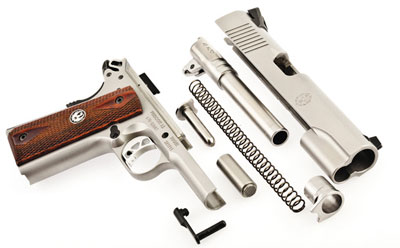
My only complaint with the SR1911 is Ruger chose to put the 3-dot sight system on this pistol. This only makes quick, accurate shooting a bit more difficult and can get someone hurt. Close-range encounters are where the most danger lies. And, in a close-range shootout, a person needs to acquire the front sight quickly and get his shot off. He does not need to be spending precious time trying to line up a bunch of dots. While some may think this is a pet peeve of mine, I would point out that some 80 percent of defensive-handgun writers and trainers do not like the 3-dot sight system and don't recommend its use.
However, there is a simple solution I use when working with the 3-dot sight system. I simply take a Sharpie and black out the dots on the rear sight. I have also been told Ruger will be offering a full line of accessories for its 1911, and things like black rear sights and ambidextrous safeties will be among the items offered.
The Ruger SR1911 is a very nice example of the grand old 1911 pistol. It is reliable and accurate. It has everything a shooter needs just as it comes from the box. I suspect that this full-size pistol is just the beginning for Ruger. My guess would be that it is already considering other variations on the 1911 theme for future production. I know this—it drew one heck of a crowd at the recent NRA Annual Meetings and the folks that I've heard from were just as impressed as I am.
In my view, it is a $1,000 1911 that can be purchased for a suggested retail price of only $799. In today.'s economy you just can't beat a deal like that.
Manufacturer: Ruger; (603) 865-2442, www.ruger.com
Action Type: Recoil-operated, semi-automatic
Caliber: .45 ACP
Capacity: 7+1
Slide: Forged stainless steel
Frame: Cast stainless steel
Barrel Length: 5 inches
Rifling: 1:16 inches, RH twist
Sights: Novak's fixed combat sights, front & rear, with 3-dot system
Trigger: Skeletonized aluminum with adjustable over-travel stop
Trigger Pull: 4 to 5.5 pounds
Grips: Checkered wood with Ruger medallion
Length: 8.67 inches
Height: 5.45 inches
Width: 1.34 inches
Weight: 39 ounces
Accessories: One eight-round magazine
MSRP: $799













